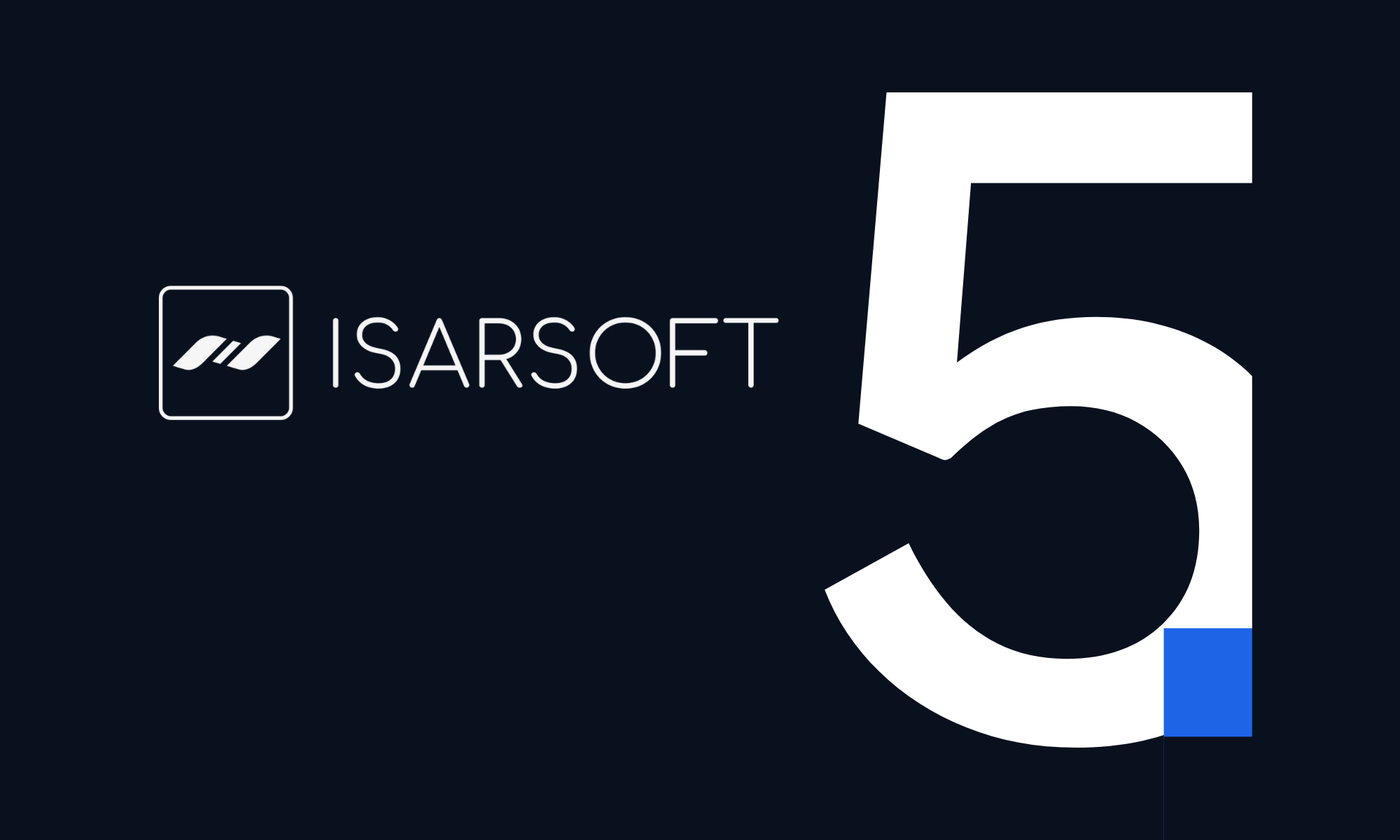The Rise of AI: What Businesses Need To Know
Artificial Intelligence (AI) is revolutionizing industries with innovations like machine learning and multimodal AI, which integrates text, images, audio, and video for better interactions. These advancements improve customer service, efficiency, and decision-making. Staying informed on AI trends is crucial for businesses to remain competitive and leverage these technologies strategically. Keep reading to explore the latest AI developments.
Published
May 22, 2024

Artificial Intelligence (AI) is not just a buzzword—it's a transformative force that's reshaping industries and defining the next frontier of technological innovation. As we stand on the brink of what many experts are calling the next great AI revolution, it’s clear that the impact of AI will only grow stronger over the coming decades. For businesses looking to secure a competitive edge, staying informed about the latest advancements in AI technologies is not just an option; it's a necessity.
In this article, we'll dive into the latest trends and developments in AI, offering a clear view of how these technologies are influencing various sectors and how they can be leveraged for strategic advantage. From advancements in machine learning models and AI video analytics to applications across retail, transportation, security, and more, we're here to guide you through the dynamic landscape of AI innovations.
Understanding the Rise of AI
AI refers to the simulation of human intelligence in machines that are programmed to think like humans and mimic their actions. The term may also be applied to any machine that exhibits traits associated with a human mind, such as learning and problem-solving.
The concept of AI is not new; its roots trace back to the mid-20th century when the first AI programs were written. However, the last decade has seen unprecedented advances due to improvements in computational power, availability of massive datasets, and breakthroughs in AI algorithms, especially in deep learning and neural networks.
.png)
With growing interest in AI, its computational power and sophistication have reached new heights. The shift from theoretical models to practical, impactful applications is driven by increased processing power, more data, and significant advancements in AI methodologies. This evolution is changing the way we approach problem-solving across all sectors, marking a crucial time for businesses to explore and adopt AI-driven solutions.
Advances in AI
AI is rapidly evolving, bringing forth innovative solutions that are reshaping industries and enhancing human capabilities in unprecedented ways. Among the most notable developments are the advances in machine learning models that enable more accurate predictions, smarter decision-making, and automated processes that can mimic complex human tasks.
What is Multimodal AI?
As AI technology advances, one of the most exciting frontiers is Multimodal AI, which combines different forms of data input to enhance the understanding and interaction capabilities of AI systems. This approach marks a significant leap beyond traditional single-mode AI, setting the stage for more intuitive and effective systems.
The rise of Generative AI has dramatically enhanced our ability to create diverse forms of media in just seconds. This trend is evolving further as various types of content converge through the use of multimodal AI, setting the stage for a truly transformative experience. But what exactly is multimodal AI? Multimodal AI refers to artificial intelligence that can understand, interpret, and generate multiple forms of data, such as text, images, audio, and video. By processing these varied data types simultaneously, multimodal AI can deliver a more comprehensive and cohesive user experience. For example, imagine a digital assistant that can analyze your spoken words (audio), interpret your facial expressions (video), understand written instructions (text), and even recognize objects in your surroundings (images). This level of integration allows for a deeply immersive experience, where AI can engage multiple human senses through a single interaction channel.
How Will Multimodal AI Help Businesses?
Developments in multimodal AI can be leveraged by businesses to increase customer satisfaction through improved chatbots. Chatbots are crucial for businesses as they automate customer service operations, reduce overhead costs, and provide immediate, 24/7 support to customers. Traditional chatbots typically rely on text-based inputs and outputs, parsing user text and responding with predefined answers or those generated from simpler AI models. However, these chatbots often struggle with understanding the context and nuance, especially when customer queries are complex or involve emotions and visual cues.
Multimodal AI chatbots, on the other hand, can process and integrate multiple types of data — text, audio, images, and video — to provide a richer and more accurate interaction with users, thus increasing customer interaction and satisfaction. This enhanced capability allows businesses to deliver more personalized and effective support, ensuring that customers feel understood and valued across all touchpoints.
.png)
The Rise of Small Language Models (SLMs)
As businesses increasingly recognize the benefits of AI, the demand for adopting these technologies is growing rapidly. The focus has traditionally been on large, complex models that require significant computational resources and expertise. However, there's a shift towards making AI more accessible and manageable for more businesses through the implementation of Small Language Models (SLMs).
Large Language Models (LLMs), such as ChatGPT, are powerful AI tools capable of understanding and generating human-like text. However, these models require substantial computational power, which translates into considerable energy use. It is estimated that by 2027, AI servers could consume between 85 to 134 terawatt-hours of electricity annually. To put this into perspective, that's roughly the same amount of energy used by some countries in a single year!
As we navigate the complexities of AI development, the shift towards SLMs could play a crucial role in balancing technological advancement with environmental sustainability and operational efficiency. This transition not only reflects an adaptation to the energy challenges posed by LLMs but also illustrates a broader commitment to responsible AI use.
Why This Shift Is Important for Businesses
The move towards Small Language Models is crucial for businesses for several key reasons:
- Cost-Effective Operations: SLMs offer a more affordable way for companies to deploy AI, reducing the high costs associated with running LLMs. This affordability enables small and medium-sized enterprises to leverage AI, enhancing their competitiveness without significant financial strain.
- Sustainability Commitments: Adopting SLMs supports businesses in reducing their environmental impact, as these models require significantly less electrical power and produce lower carbon emissions than larger models. This aligns with increasing global demands for sustainable practices and helps businesses meet their environmental responsibility goals.
- Agility and Flexibility: SLMs can be adapted and updated more quickly than LLMs, giving businesses the agility to respond to market changes and customer needs efficiently. This flexibility is essential in fast-paced industries where adapting swiftly to new trends is critical for maintaining competitive advantage.
Democratization of AI and Data Literacy
The prospective rise of multimodal AI and SLMs suggests the democratization of AI across various sectors. So, what is the democratization of AI? The democratization of AI refers to making AI tools, resources, and capabilities accessible to a broader range of people across various industries, not just to specialized experts or those with advanced technical skills. This movement aims to enable more individuals and organizations to utilize and benefit from AI without needing significant expertise or resources.
This shift is a crucial step towards integrating AI into daily business operations, enabling companies to harness the full potential of AI to improve decision-making, enhance customer experiences, and streamline operations. According to a survey conducted by McKinsey, almost 40% of respondents who have adopted AI anticipate that over 20% of their companies' workforces will undergo reskilling, while only 8% expect their workforce size to reduce by more than 20%. This underscores the importance of reskilling in the age of AI democratization and highlights how AI is expected to transform, not replace, the human workforce.
What Businesses Need to Know About Democratizing AI
To effectively leverage the democratization of AI, businesses need to understand and act on several key aspects that will help them implement AI more broadly and effectively.
Importance of Data Literacy
For AI democratization to be successful, businesses must enhance data literacy across their workforce. Employees at all levels should understand basic data concepts and how to interpret AI outputs. Improving data literacy empowers employees to make informed decisions and contribute effectively to AI-driven processes. Businesses can achieve this through tailored training programs, which might include workshops, seminars, and online courses that cover essential topics such as data ethics, basic statistics, and the interpretation of machine learning model outputs.
Accessible AI Tools and Platforms
Equally important is the need to utilize low-code and no-code platforms that allow non-technical users to create and customize AI applications. These platforms can dramatically reduce the barrier to entry for using AI, encouraging creative problem-solving across the board. Additionally, developing or adopting tools with user-friendly interfaces simplifies complex AI processes, helping non-experts understand and use AI tools without extensive training.
AI Video Analytics
Video analytics is a field that has been greatly impacted by the rise of AI. In recent years, we have seen that when powered by AI, video analytics can significantly improve the operations of any business. AI Video Analytics software systems such as Isarsoft Perception empowers businesses by streamlining their planning, operations, and security processes through invaluable insights. It is widely applicable across sectors and highly adaptable to the unique needs and problems of institutions. The use cases for such operations are broad and continue to expand each day.
Retail
In the retail sector, AI video analytics dramatically enhances the shopping experience by analyzing customer behavior to optimize store layouts, product placement, and staffing. This technology improves operational efficiency by tracking queue lengths and wait times, enabling more effective management of checkout processes and enhancing customer satisfaction. Additionally, AI-driven surveillance helps in security and loss prevention by detecting and alerting staff to suspicious activities in real-time.
Tutorial: Measuring Customer Engagement in Retail with Isarsoft Perception
In this tutorial, we explore how to use Isarsoft Perception to measure customer engagement effectively by analyzing movement patterns within a store. This step-by-step guide demonstrates the implementation of AI video analytics to track how shoppers interact with different areas, helping retailers optimize store layouts and product placements for an enhanced shopping experience.
Discover more AI video analytics solutions for retail here.
Transportation
In transportation, AI video analytics improves safety and efficiency by monitoring passenger flow to prevent overcrowding in public transport, optimizing vehicle and fleet management, and enhancing the passenger experience through better route and schedule management. Real-time analytics also provide passengers with updated travel information, improving overall travel satisfaction.
Discover more AI video analytics solutions for transportation here.
Traffic and Parking Management
For road and traffic management, AI video analytics optimizes traffic flow by adjusting signals in real-time, reducing congestion and travel time. It enhances road safety by detecting accidents and unsafe driving behaviors, speeding up emergency responses, and improving parking management by guiding drivers to available spots and monitoring for violations, easing city congestion.
Discover more AI video analytics solutions for traffic and parking management here.
Future Directions
AI technologies continue to evolve daily, featuring shorter response times, more accurate answers, and expanding application fields. For businesses in this rapidly advancing sector, staying informed about these developments is crucial to remain competitive and innovative. By understanding the latest in AI, from machine learning to multimodal AI, companies can enhance decision-making, improve customer experiences, and streamline operations. Responsibly embracing AI's potential ensures businesses are prepared for workforce and market changes while fostering a culture of data literacy and ethical practice. Ultimately, keeping abreast of AI trends is essential for sustainable growth and success in the digital age.
More about Isarsoft
With Isarsoft Perception, your camera systems become part of your business intelligence. Whether the goal is to increase efficiency, customer satisfaction, or safety, Isarsoft Perception provides the insights needed for informed decisions.

Contact us, to learn more about how to turn security cameras into intelligent sensors.



